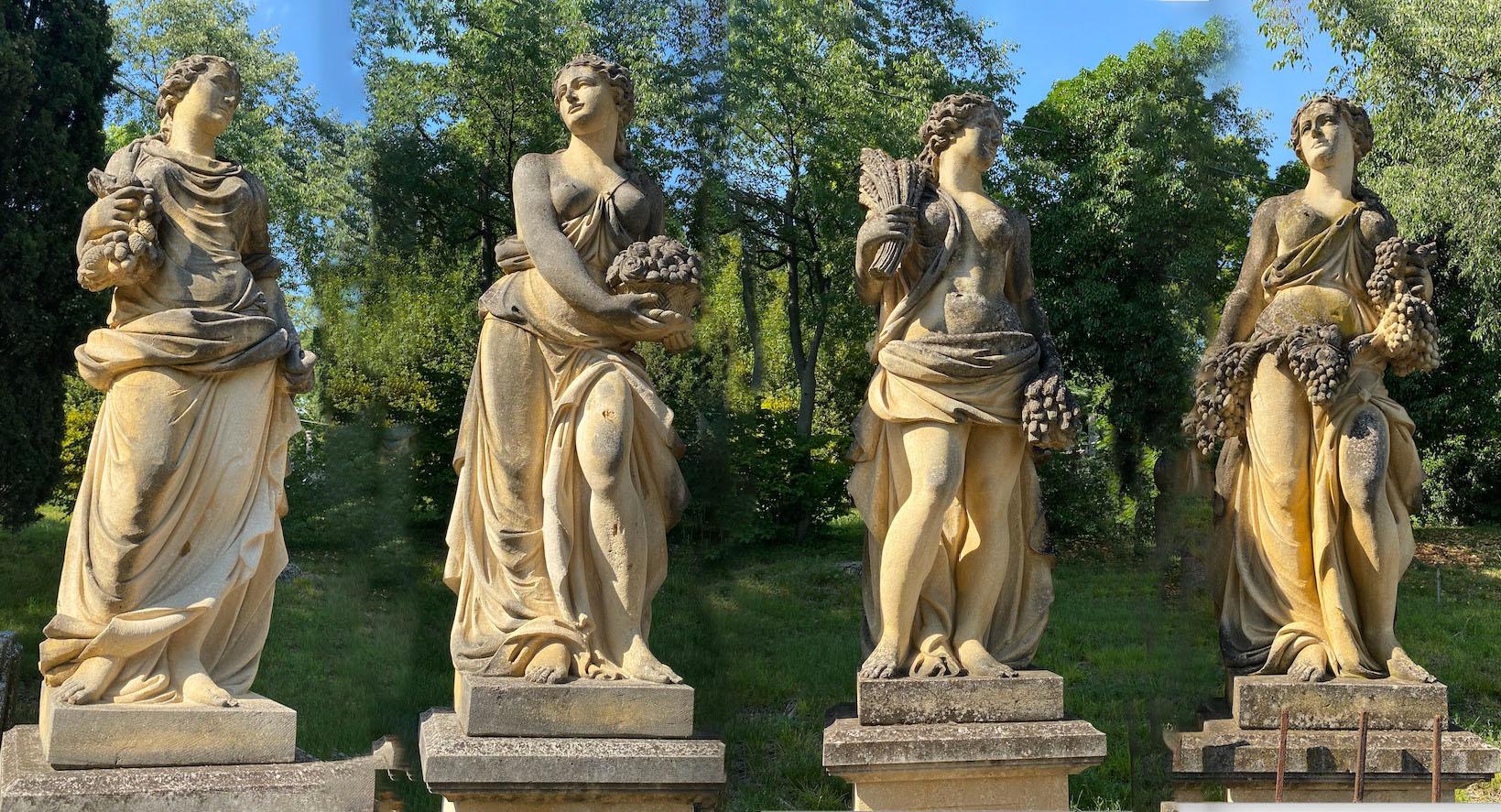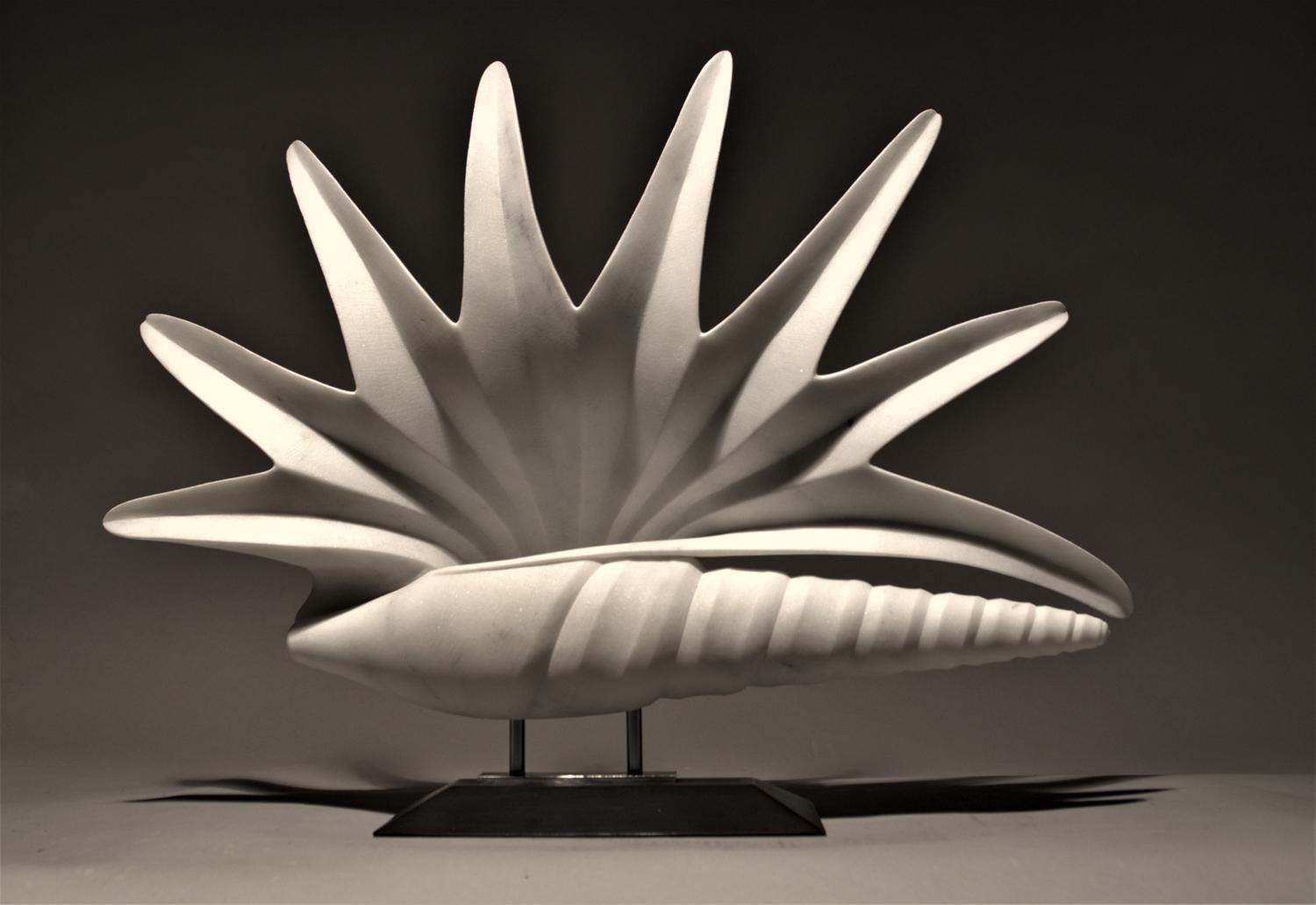Antoine-Louis BaryeSculpture of "A Rearing Bull" by animalier Antoine-Louis Barye1795-1875
1795-1875
About the Item
- Creator:Antoine-Louis Barye (1796 - 1875, French)
- Creation Year:1795-1875
- Dimensions:Height: 9.5 in (24.13 cm)Width: 5.25 in (13.34 cm)Depth: 10.38 in (26.37 cm)
- Medium:
- Movement & Style:
- Period:
- Condition:Good condition of the bronze and minor wear to the base commensurate to age.
- Gallery Location:Greenwich, CT
- Reference Number:1stDibs: LU141327228512
Antoine-Louis Barye
The son of a goldsmith, Parisian born Antoine-Louis Barye was a sculptor of animal subjects and acclaimed, not only for his apparent skill but as the founder of what became known as the French Animaliers School. Among his patrons were representatives of the state government and royalty, including the Duke of Orleans and the Dukes of Luynes, Montpensier and Nemours.
Well compensated financially, Barye was able to buy the best of materials and hire the country's most skilled foundry craftsmen. The foundry he hired was owned by Ferdinand Barbedienne and casts from this period were stamped with the letters, FB. However, he did not make a lot of money from his work because he was such a perfectionist that often he would not sell his work because he thought it was not "quite right." In 1848, he declared bankruptcy and his molds and plaster casts were sold along with the copyrights.
Barye's specialty was aroused, angry-seeming wild game such as lions and tigers and elephants, but he also did equestrian groups and mythology figures. In order to do realistic depictions of animal anatomy, he spent much time at the Jardin des Plantes in Paris. His early training was as an apprentice to a metal engraver, but being drafted in the army in 1812 ended that education. In 1832, he had established his studio, and unique at that time was his method of cold stamping his bronze casts so that each one had a special number. He had his first entry, The Milo of Croton, in the Paris Salon in 1819, winning a second prize. In 1831, a work regarded as a masterpiece, Tiger Devouring a Gavial, was in the Salon and purchased for the Luxembourg Gardens, which is now in the Louvre. However, many of his subsequent Salon submissions were rejected and so angered him that between 1836 and 1851, he refused to submit entries. In 1851, he again exhibited at the Salon with Jaguar Devouring A Hare, and this work, like the 1831 entry, was placed in the Luxembourg Gardens and eventually in the Louvre.
In spite of problems with the Salon, Barye received many accolades for his work, and the period of 1837–48 was considered the most productive time of his career. However, in 1848, when he lost control of his work and it was reproduced by others including Martin and Barbedienne, the sculptures, according to some art professionals, are not as skillfully executed. In 1848, after his bankruptcy, Barye became director of Casts and Models in the Louvre, until 1850, when he was replaced by Emmanuel Fremiet. It was a very difficult time for him. However, within a few years, he began receiving accolades for the quality and uniqueness of his work, and people began appreciating the powerful images of his sculpture, especially the wildlife in their natural surroundings. In 1854, he was appointed Master of Zoological Drawing in the Musée National d'Histoire Naturelle and held this position until his death in 1875.
- ShippingRetrieving quote...Ships From: Port Chester, NY
- Return PolicyA return for this item may be initiated within 14 days of delivery.
- The Supreme Fisher Boy Carrara Marble statueBy Pio Fedi 1Located in Greenwich, CTThe Supreme Fisher Boy, is the elevation of what is an everyday task to a celebration of a boy who elegantly rides the back of a dolphin while netting the r...Category
Mid-19th Century Rococo Still-life Sculptures
MaterialsMarble
- Pair of Miner BookendsBy Max KalishLocated in Greenwich, CTMax Kalish was an important and highly collected American sculptor desired for his depictions of the working man. Here we see a miner taking a break. Kalish was adept at conveying ...Category
1920s Academic Figurative Sculptures
MaterialsBronze
- Grand Canal, VeniceBy Warren W. SheppardLocated in Greenwich, CTHighly respected American painter Warren Sheppard depicts the fishing boats of Venice with their colorful sails along the still waters of the Adriatic Sea. Sheppard is famous for his...Category
19th Century Academic Landscape Paintings
MaterialsOil, Canvas
- Jupiter and Mercury received by Philemon and BaucisLocated in Greenwich, CTCanvas size: 57 3/4 x 45 1/2 inches A striking and impressive French Academic painting in a high quality Italian style gold leaf frame. Gorguet was an Academic French artist who was trained by Boulanger, Gerome, Bonnat and Morot. His academic training was so strong that he was asked by the Opera House to illustrate many of their posters and he made his living illustrating many books of the time. In the market today this is most of what circulates and comes to light by the artist. He was ultimately made a professor of Drawings at L’Institut. However, Gorguet was also a Symbolist artist and did works aligned with the Art Nouveau movement. Many of these works are quite impressive but rarely have surfaced in the art market. Jupiter and Mercury Received by Philemon and Baucis is more of an Allegorical work and Gorguet switched gears to do a painting which would garner International attention at the important Concourse du Prix de Rome competition. 1891 was a year where the competition would be stiff and he knew he had to do an impressive painting with a compelling historical or allegorical content. In this painting, Gorguet is depicting their Jupiter and Mercury’s arrival at their home and the indication that Philemon and Baucis will share what they have with them despite their poverty-stricken means. The technical execution of this work is exceptional as the figurative work is done masterfully and any small detail within the canvas demonstrates tremendous attention of subtlety of tone and modeling. An example is the strand of cloth that crosses Jupiters chest and the delicate shades of pink and gray and how it is modeled. More than ever, the academic artists of this period are to be appreciated for the quality and creativeness of their work. And the timelessness of these classical allegories are still applicable to our lives today. So we predict a turn back toward work like this as qualitatively we know it will never be done again. Story of Jupiter and Mercury Visiting Philemon and Baucis (one interpretation) According to ancient Roman mythology and Ovid's Metamorphoses (8.631, 8.720.), Philemon and Baucis had lived out their long lives nobly, but in poverty. Jupiter, the Roman king of the gods, had heard of the virtuous couple, but based on all his previous experiences with humans, he had serious doubts as to their goodness. Jupiter was about to destroy mankind but was willing to give it one final chance before starting over again. So, in the company of his son Mercury, the wing-footed messenger god, Jupiter went about, disguised as a worn and weary traveler, from house to house among the neighbors of Philemon and Baucis. As Jupiter feared and expected, the neighbors turned him and Mercury away rudely. Then the two gods went to the last house...Category
1890s Academic Paintings
MaterialsCanvas, Oil
- At the Market, FlowersLocated in Greenwich, CTA grand, elegant and Classic French still life of flowers! Can hold an entire room and long length of wall. Beautiful, opulent color tones so extra lighting is not necessary. Great presentation in the Empire style frame, 22 Karat. Undoubtedly Perrachon’s most ambitious canvas, it still has all of the qualities of his smaller rose paintings which gained him great recognition. As with any of the Lyon trained flower painters, Perrachon’s painting displays sound draughtsmanship, luminous colors and clever composition. This particular painting was exhibited at the Lyon Salon in 1898. Chez la Marchande de Fleurs presents a stunning array of blooms, among them roses and lilacs, set against a richly-textured ground. Perrachon creates a brilliant play of light against the baskets and pots of flowers, skillfully rendering highlight and shadow in order to create a sumptuous and beautiful composition. A flower and still life painter, André Perrachon was a student of Lepage at the Ecole des Beaux Arts of Lyon. Lyon produced an important and remarkable school of flower painters in the 19th century of which Perrachon is an excellent exponent. Perrachon debuted in the Paris salon in 1850 and won honorable mentions in both 1859 and 1863, continuing afterwards to exhibit regularly in the Paris and Lyon Salons. Perrachon was also a most popular art...Category
1890s Academic Paintings
MaterialsCanvas, Oil
- Still Life, Flowers and FruitLocated in Greenwich, CTA stunning and dramatic still life by noted Belgian 19th century artist, David De Noter. Framed in a complimentary Empire style 22 karat hand carved frame....Category
1860s Academic Paintings
MaterialsCanvas, Oil
- Auguste Rodin "Main Droite Feminine" Bronze Sculpture by Alexis Rudier FoundryBy Auguste RodinLocated in San Francisco, CAAuguste Rodin French, 1840-1917 "Main Droite Feminine, doigts semi replies, annulaire leve" Feminine Right Hand, semi-folded fingers, raised ring finger Conceived circa 1890-1900; cast circa 1930-1940 Signed "A Rodin" on the right side of the wrist and with the foundry mark "Alexis Rudier...Category
Early 20th Century Academic Figurative Sculptures
MaterialsBronze
- Set of Extraordinary Italian Stone Statues Representing the Four SeasonsLocated in Rome, ITMonumental classically draped female figures and their distinguishing symbols on a square base. Autumn, winter, spring and summer. Measures: Heig...Category
20th Century Academic Figurative Sculptures
MaterialsLimestone
- Four Season Extraordinary Set of Italian Stone Caryatids SculpturesLocated in Rome, ITFour Caryatids sculptures with classically draped figures and their distinguishing symbols. Autumn, winter, spring and summer. Measures: Height wi...Category
20th Century Academic Figurative Sculptures
MaterialsLimestone
- Four Season Extraordinary Set of Italian Stone Term Figure SculpturesLocated in Rome, ITFour Term Figure sculptures with classically draped figures and their distinguishing symbols in carved Vicenza stone. Autumn, winter, spring and summer. Measures: Height with squar...Category
20th Century Academic Figurative Sculptures
MaterialsLimestone
- Set of Extraordinary Italian Stone Statues Representing the Four SeasonsLocated in Rome, ITMonumental classically draped female figures and their distinguishing symbols on a square base. Autumn, winter, spring and summer. Measures: Height of the sculptures cm 190 with squ...Category
20th Century Academic Figurative Sculptures
MaterialsLimestone
- Shell of the Gods: Italian Carrara Marble, SculptureBy Bela BacsiLocated in Pasadena, CAProvenance Acquired by the gallery directly from the artist. Description This sculpture by Bela Bacsi was inspired by a Hellenistic marble based on...Category
2010s Academic Sculptures
MaterialsMarble





